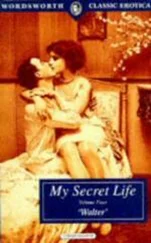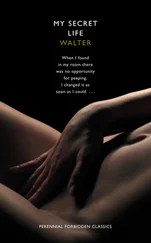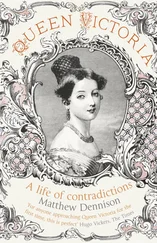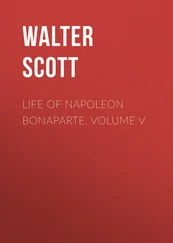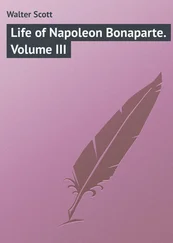Sickert’s reference to painting as his ‘profession’ was an optimistic statement of intent, rather than of fact. As yet his ‘profession’ had yielded few tangible rewards. His pictures did not sell. If he was gaining a reputation it was only amongst the tiny coterie of Whistler’s followers. He made presents of his paintings to most of the members of the school – to Menpes, Starr, Roussel, and Elizabeth Armstrong – and borrowed back several of these small panels to send in to Les XX. But his new large painting was not finished in time. He sent instead the picture of Miss Lenoir on her sofa, which had just been returned from the SBA show. 84
The exhibition began in February 1887. Sickert could not travel to Brussels for the opening, but the press reports made clear the challenging nature of the event. Amongst the vague Symbolist imaginings and Impressionist morsels on view, the painting that attracted the greatest attention was Seurat’s Sunday Afternoon on the Island of La Grande Jatte . The picture confirmed a development hinted at in the last Impressionist exhibition. Its novel approach to colour – dividing its constituent hues into tiny dots – had been dubbed ‘Neo-Impressionism’ by the young French critic Félix Fénéon, and already other artists were taking it up. Camille Pissarro and Paul Signac were both represented in the show with ‘Neo-Impressionist’ works, while the Belgian artists Willie Finch and Théo van Rysselberghe were also beginning to experiment with the technique. Against such scintillating novelty Sickert’s contributions appeared both literally and figuratively insubstantial. The reviewer for L’Indépendence Belge remarked that although one of his paintings was called Trois Nuages , the title would have been apt for almost any of them: ‘tant ils sont tous nuageux’. 85 Nevertheless, to be in the exhibition at all was an achievement and a thrill. 86
If Menpes is to be believed, the innovative work on view in Brussels provoked Sickert and the other members of the Baker Street band to emulation. They became, for a while, ‘prismatic’ and began to experiment with painting ‘in spots and dots’. 87 For Sickert, however, the main effect of his exposure to the swift current of the Continental avant-garde was upon his subject matter.
* Oswald Adalbert Sickert was buried at Brompton Cemetry. His personal estate, which he left entirely to his wife, was valued at just £295. 10s. 11 d .
* His family used to despair at some his ‘outrageous’ ploys, ‘such as turning up at society functions in all kinds of odd clothes’: one his favourite outfits was a ‘country squire’ (reminiscences of a servant of the Sickert family during the 1880s, quoted in LB, II, 14).
†Sickert never hung the walls of his homes with his own work. To have done so would have seemed to him ‘a form of incest’ (RE, 287).
* Sickert’s command of the superficial aspects of Whistler’s style could, it seems, deceive some people. In later years, Sickert liked to tell an anecdote of how he had been entrusted to deliver a small Whistler panel to a customer in Dieppe. Crossing over to France on the ferry, the picture had been torn from his grasp by a gust of wind and blown overboard. Undeterred, on arrival at Dieppe, he had assembled some materials and painted his own version of the scene, which he then delivered to the unsuspecting – and completely satisfied – customer. Sickert told this rather fanciful story to Donald Ball in the late 1930s, when Ball was a student at the Thanet School of Art.
* A study of the artists’ addresses in 1885/6 provides some clues, with Menpes, Roussel, and Steer living in Chelsea, Bernhard Sickert in Kensington, Walter Sickert in Swiss Cottage, Starr in Fitzroy Street, and Ludovici in Camden Town. The date of the foundation of the club is conjectural; but, given its Baker Street location, it is difficult to suppose that it occurred before the Sickerts’ move to Broadhurst Gardens.
* The correct pronunciation of Degas’ name became one of Sickert’s great – and abiding – causes. ‘Day-gas, day-gas, why’, he lamented, ‘do the English always say Day-gas.’ He never tired of pointing out that Gas was a town in France from which Degas’ ancestors had come, and that the name had originally been spelled De Gas, making this – and the pronunciation – clear (WS, ‘John Everett Millais’, Fortnightly Review , June 1929).
* ‘One day walking with [Whistler] I heard the Master mutter – at first it was but a mutter, but gradually the mutter grew more distinct, and I heard him say, “Well, you know, talking of Walter … I don’t mean that Walter will ever do as much as Manet, but if we are to consider the relations of Art and Nature, and of English painting to those red things which –” The rest of the sentence I never heard, it was lost in guffaws. By red things the Master meant portraits of officers in uniform, but this by the way. What immediately concerns us is that the Master looked upon Walter Sickert as a great painter.’ Saturday Review (23 June 1906), 784.
‘The Boy I Love is Up in the Gallery’
(Music-hall song)
Sickert was in search of a new and personal motif. His little seascapes and townscapes proclaimed a too obvious Whistlerian debt. The ballet, the racecourse, and the bathroom belonged to Degas. And although France offered other possibilities, Degas was insistent that English artists should search for English sources of inspiration. 1 Sickert seems to have considered some conventional options. One friend who met him at this time recalled that he was working away at a series of cathedrals. 2 But the attractions of ecclesiastical architecture did not long engage him. He turned instead to the more daring possibilities of the modern music hall. This was in effect a transposition to a London setting of one of Degas’ chosen subjects – the café chantant (as depicted in the Sickerts’ Mlle Bécat aux Ambassadeurs) . Although the Victorian music hall might now seem the essence of quaintness, in the 1880s it was something quite different: modern, metropolitan, vulgar, artificial, and daring. It was also distinctly British. Since his first meeting with Degas, Sickert had been toying with theatrical subjects. Besides the ‘low toned ballet girls’ of the previous year, he had made etchings of the circus, of Punch and Judy shows, and even of the occasional music-hall audience. But it was only now that he began to investigate the subject with real concentration, considering it as a motif for painting. 3
It was fertile ground. The music halls were a phenomenon of the age. Scores of them were dotted across London and its suburbs. They had – in their short life – evolved from glorified pub theatres to become institutions in their own right. But they were still dominated by alcohol. The bar was always open and a ticket usually included the price of at least one drink. Shows lasted all evening, from eight till midnight, and the audience – gathered at tables close to the stage, settled in red-plush chairs, or crammed onto benches in the gallery – were part of the show. Spectators heckled the acts, abused each other, and joined in with the choruses, while a chairman kept order and announced the succession of ‘turns’. Although some of the smart new halls offered ‘ballet’ and ingenious novelty acts, on the popular fringe song and dance still held sway, offering a diet of mawkish sentiment, broad humour, rampant jingoism, and sexual allusion. They were themes, and treatments, that appealed to the vast mass of London’s working class; and increasingly they appealed to others too. Although the guardians of public morality regarded the halls with horror, as sinks of debauchery and arenas of vice, a few bohemian spirits relished their heady atmosphere. Sickert was a pioneer in the field, but he was not alone. George Moore also had an enthusiasm for the halls, as did Steer and Ludovici. ‘What delightful unanimity of soul,’ Moore wrote, ‘what community of wit; all knew each other, all enjoyed each other’s presence; in a word there was life.’ 4 Sickert found a rich pictorial drama in the low tones of the auditorium, the garish light of the stage, and in the fleeting arrangements of the performers. But it appealed too because it was both daring and previously untapped. Whistler had never attempted to paint it, and nor had anyone else. It was a chance to stake a claim on something new – and something that was likely to shock.
Читать дальше




